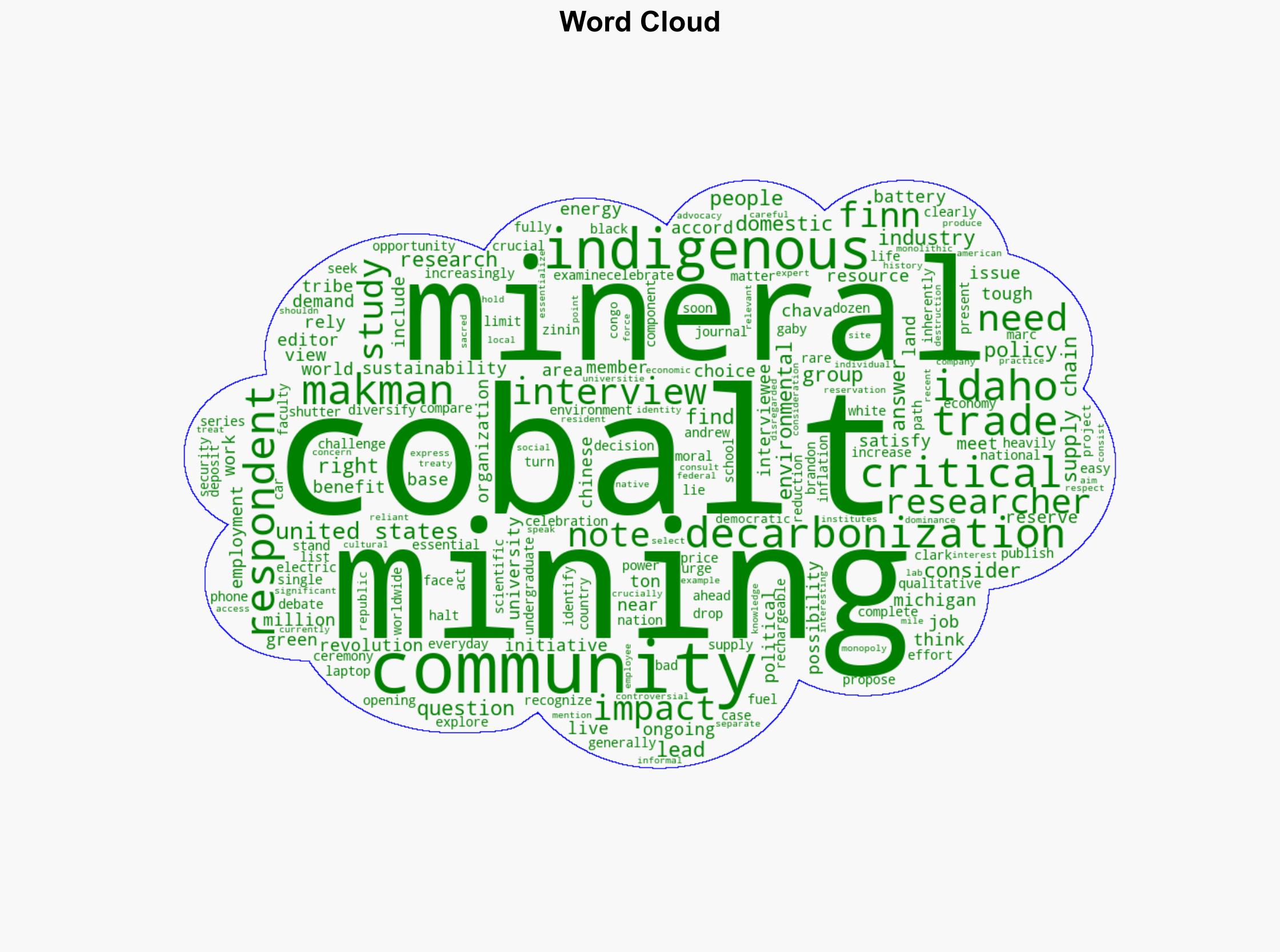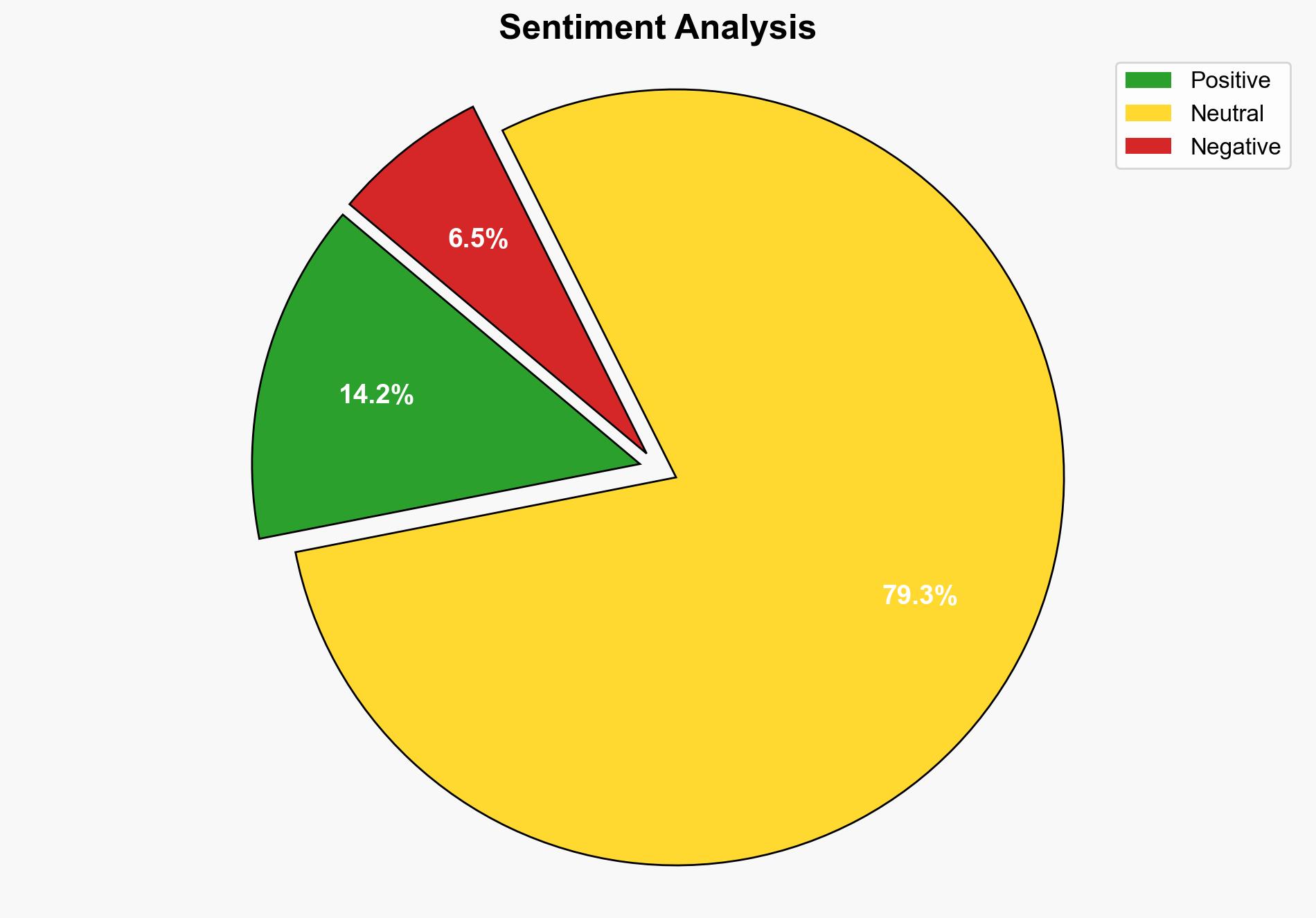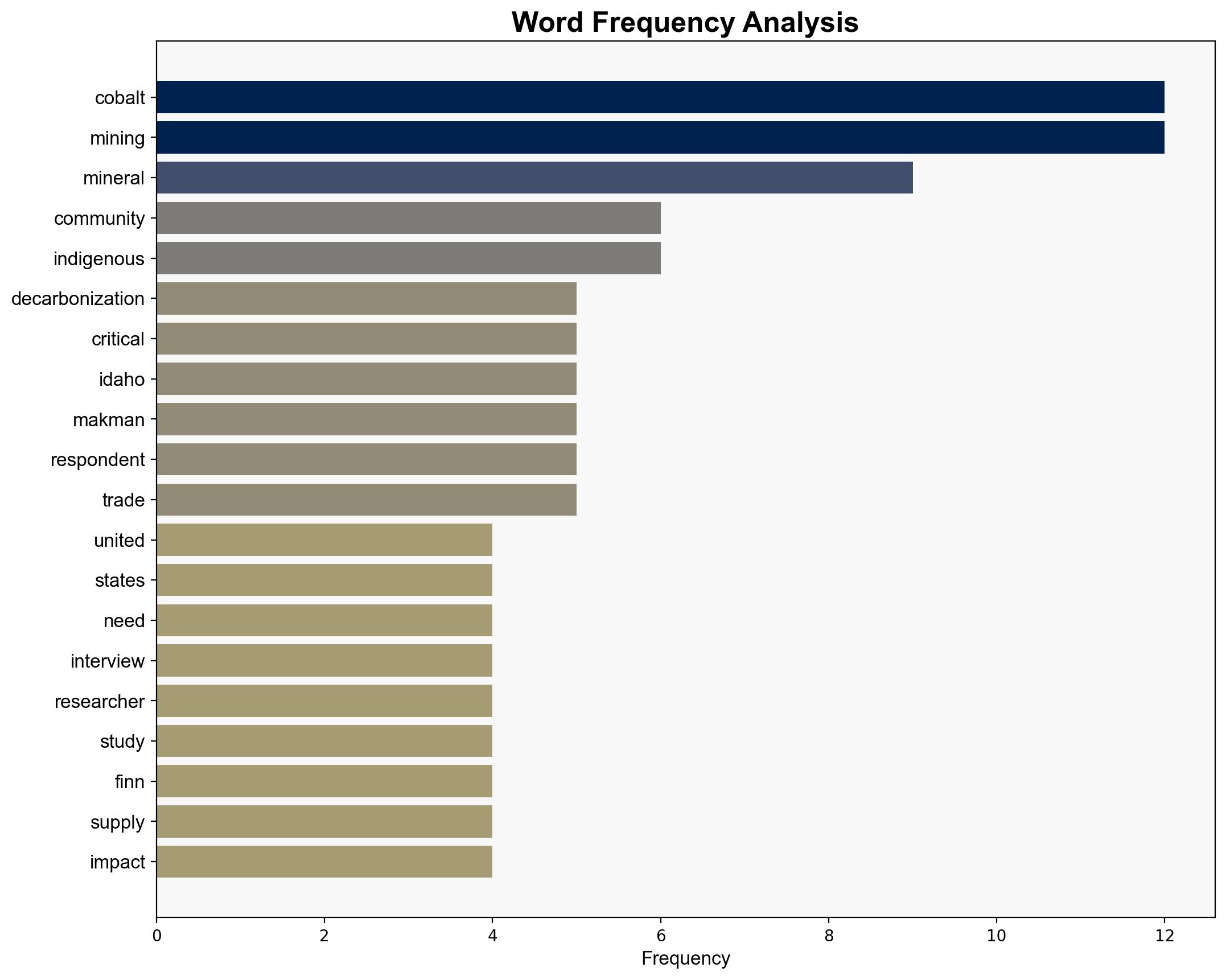Tough choices lie ahead on path to decarbonization – Phys.Org
Published on: 2025-10-09
Intelligence Report: Tough choices lie ahead on path to decarbonization – Phys.Org
1. BLUF (Bottom Line Up Front)
The most supported hypothesis suggests that domestic mining of cobalt in the United States is essential to reduce reliance on foreign sources, particularly from China and the Democratic Republic of Congo, despite environmental and social challenges. Confidence level: Moderate. Recommended action: Develop a balanced strategy that addresses environmental concerns while securing critical mineral supply chains.
2. Competing Hypotheses
1. **Hypothesis A**: Domestic mining of cobalt is crucial for the United States to achieve decarbonization goals and reduce dependency on foreign sources, despite potential environmental and social costs.
2. **Hypothesis B**: The environmental and social impacts of domestic cobalt mining outweigh the benefits, and alternative strategies such as recycling and international partnerships should be prioritized.
Using ACH 2.0, Hypothesis A is better supported due to the strategic importance of cobalt in national security and economic stability, as well as recent federal policies encouraging domestic mining.
3. Key Assumptions and Red Flags
– **Assumptions**: Hypothesis A assumes that domestic mining can be conducted sustainably and that technological advancements will mitigate environmental impacts. Hypothesis B assumes that alternative strategies can meet demand without compromising security.
– **Red Flags**: Potential cognitive biases include overestimating the feasibility of sustainable mining practices and underestimating the geopolitical risks of foreign dependency. Inconsistent data on the actual size of domestic cobalt reserves and their accessibility.
4. Implications and Strategic Risks
– **Economic**: Failure to secure a stable cobalt supply could hinder technological advancements and economic growth.
– **Geopolitical**: Continued reliance on foreign cobalt sources, particularly from China, poses a strategic vulnerability.
– **Environmental**: Domestic mining could lead to significant ecological degradation if not managed properly.
– **Social**: Mining activities near indigenous lands could exacerbate social tensions and lead to legal challenges.
5. Recommendations and Outlook
- Develop a comprehensive policy framework that balances environmental protection with the need for critical minerals.
- Invest in research and development for sustainable mining technologies.
- Engage with indigenous communities to ensure their rights and concerns are addressed.
- Scenario Projections:
- Best: Successful implementation of sustainable mining practices leads to energy independence and economic growth.
- Worst: Environmental degradation and social unrest due to poorly managed mining operations.
- Most Likely: Gradual increase in domestic mining with ongoing challenges in balancing environmental and social impacts.
6. Key Individuals and Entities
– Gaby Clark
– Andrew Zinin
– Chava Makman
– Brandon Marc Finn
7. Thematic Tags
national security threats, environmental sustainability, resource dependency, indigenous rights





